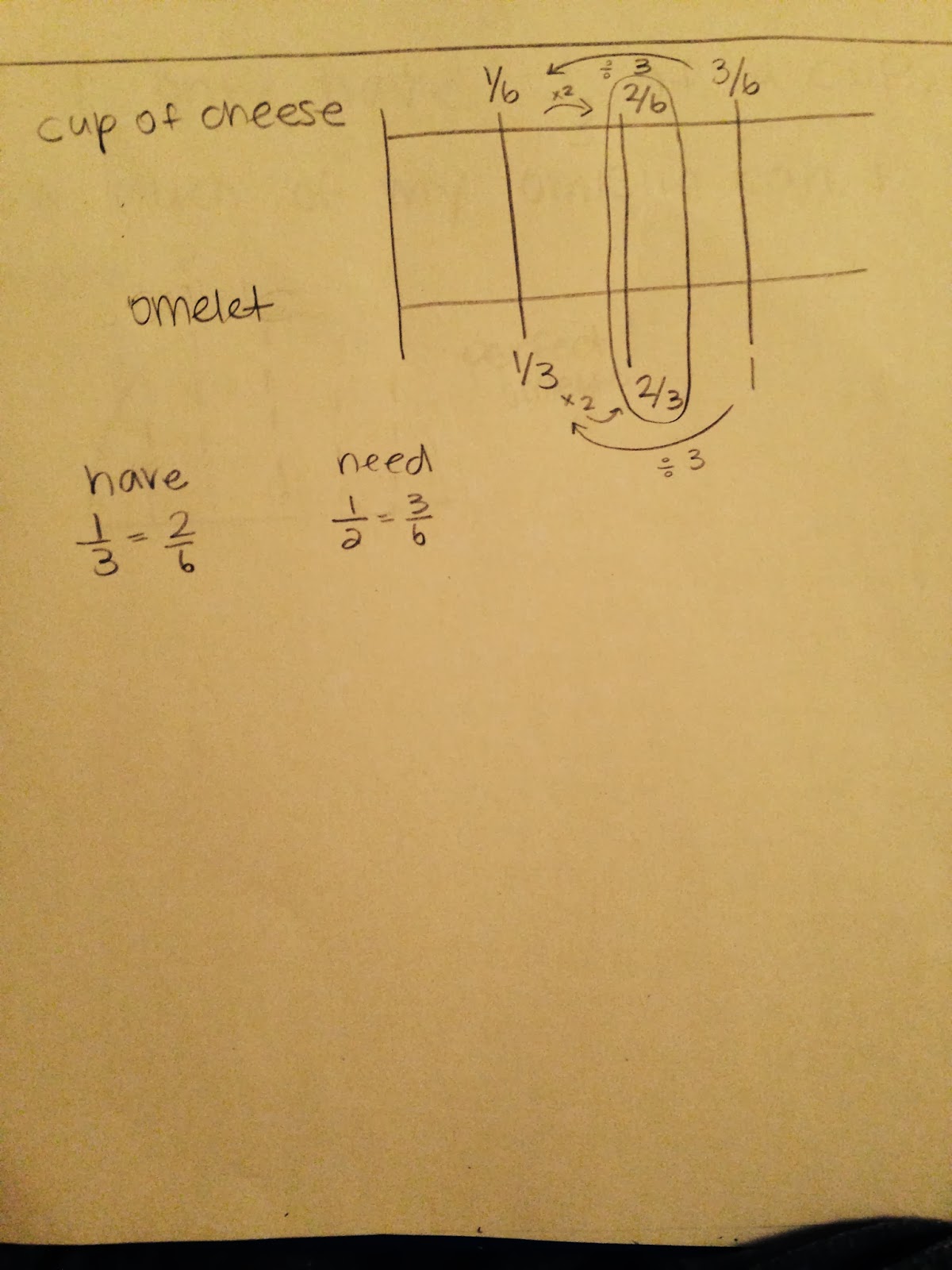So I'll start off by showing you my essential question for 4th Grade Math: How can we model answers to fraction problems? I started off by finding a question to ask for the division problem 1/3 ÷ 1/2. My question is: My favorite breakfast recipe calls for 1/2 a cup of cheese to make one cheesy omelet. If we have 1/3 cup of cheese, how many omelets can I make.
To solve this problem, we can easily use the keep, change, flip method to find the answer 2/3 as seen belowBUT...rather than just teaching our students to do the "Keep, Change, Flip" method, we want them to develop meaning with multiplication and division problems of fractions.
Two things I think a student needs to have an understanding of before they start multiplying and dividing fractions are one, what a fraction is and how to work with them, and two, equivalent fractions. The first part of my text set is a recap of what fractions are.
The next part of my text set will be talking about equivalent fractions. BrainPOP is one of my favorite places to find simple videos that really help. For this, you need an account to access the information but I used it last semester when I was helping out in a science classroom and I loved working with it. They have a video on equivalent fractions and it is great. It shows exactly what students should be learning about equivalent fractions, and gives them a chance to practice at the end. I think it is a great way to recap a section a student misunderstood or see where a student may have a misconception about equivalent fractions.
Another fun way to learn about dividing and fractions is the book, The Doorbell Rang by Pat Hutchins. It is a story book about a mom who bakes cookies for her two kids. The kids start to divide up the cookies between each other but as the doorbell kept ringing and more people arrived, they had to divide the amount of cookies by the people that were there. I think this models dividing fraction. If you can't find the book, here is the story read aloud on youtube:
The next way I learned how to do it would be in a double number line, as seen in the picture below:
These are two great ways to show an understanding of fraction division that are shown in Beckmann's textbook.
Another text I found was on Annenberg Learner. On this site, I found a way to model division of fractions using little blocks. If a student doesn't understand how to do it on a double number line or a strip diagram or can't process it by just keep, change, flip, here is another way to model the division of fractions.
And lastly, I decided to bring a little baking station to the classroom. I would have the recipe but different amounts of ingredients that could make more than the recipe or less than. I think this would be an alternative way for the students to actually see what's going on and interpret division hands on.
So after finishing this text set, I do think it would be useful. Though it does take some time to do, I feel that it will definitely benefit your students. It would be cool to see teachers collaborate on text sets for a certain unit. That way it would be less work for one person but it would still come out with a killer text set.
~The Teach Fairy







